Tagged With ‘sweet’
Hermès
Eau de Néroli Doré and Eau de Rhubarbe Eclarate
11 November, 2016
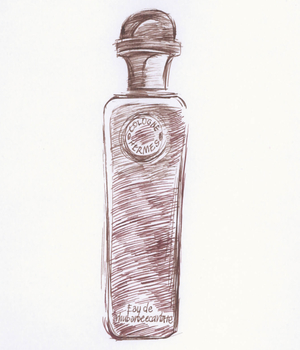 In spring 2016, after ten years as Hermès’ in-house ‘nose’, Jean-Claude Ellena handed over the (no doubt luxuriously designed) reins to the Swiss-Italian perfumer Christine Nagel. Hermès celebrated the handover with two new additions to its Colognes range, one by Ellena and the other by Nagel – her first perfume for the brand.
In spring 2016, after ten years as Hermès’ in-house ‘nose’, Jean-Claude Ellena handed over the (no doubt luxuriously designed) reins to the Swiss-Italian perfumer Christine Nagel. Hermès celebrated the handover with two new additions to its Colognes range, one by Ellena and the other by Nagel – her first perfume for the brand.
Ellena’s Eau de Néroli Doré is a fittingly sumptuous sign-off from this much-lauded perfumer, using high concentrations of neroli oil, extracted from the flowers of the Seville orange tree. It’s as refined and elegant as the man himself, and like most of his fragrances it also contains an ingredient more often associated with food. In this case it’s saffron, which (to my nose at least) seems to give the perfume an added touch of smoothness and sheen.
Christine Nagel’s Eau de Rhubarbe Eclarate, by contrast, is an exercise in sheer vivacity and ebullience, using the smell of freshly-cut rhubarb and extending its longevity with the soft, refined scent of modern synthetic musks. It’s fruity and sweet and instantly appealing, more emotional than intellectual, but certainly great fun. With its ruby-red bottle it’s a real pick-me-up at the start of the day; save the golden Eau de Neroli Doré for later.
Balmain
Monsieur Balmain
25 May, 2015
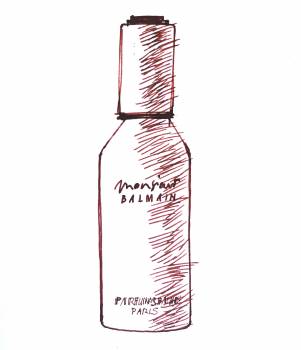 Lemon verbena is not, it has to be said, the most beautiful shrub in the world, though it’s easy enough to grow in a sunny corner. Its long woody stems give it a rather ungainly appearance, with tufts of spear-shaped leaves at their ends, which appear so late in the season that I’ve often wondered whether the one in my garden was dead.
Lemon verbena is not, it has to be said, the most beautiful shrub in the world, though it’s easy enough to grow in a sunny corner. Its long woody stems give it a rather ungainly appearance, with tufts of spear-shaped leaves at their ends, which appear so late in the season that I’ve often wondered whether the one in my garden was dead.
Aloysia citrodora, to give it its Latin name, grows wild across much of South America, and like so many other garden plants it was brought to Europe by Portuguese and Spanish colonists at some point in the seventeenth century.
Though you wouldn’t grow lemon verbena for its shape, its leaves are a different matter. Long, narrow and folded neatly in half along their length, they are bright green, shiny, and rather rough and sticky to the touch. But what makes them special is the scent they release when crushed, which is so deliriously refreshing that, once I’ve started sniffing them, I find it extremely hard to stop. They make a fine herbal tea (the verveine in which Proust dipped his famous madeleine) and an even finer perfume.
As both its common and Latin names suggest, lemon verbena has a lemony scent – yet that hardly does it justice. Lemons may have a wonderfully fresh, sharp tanginess of their own, but it’s accompanied by the sour, mouth-puckering sharpness of their taste. Lemon verbena has none of that. It has all the freshness of lemon, for sure, but mixed with a gentle sweetness that never becomes cloying, however often you smell it.
This sherbety, sorbet-y scent has all the innocence of childhood: just smelling it can give me the giggles. It might not be the most sophisticated fragrance in the world, but I can think of few better pick-me-ups on a dull dark morning, or for that matter on a sultry summer’s day. And what I love about Monsieur Balmain is that it smells pretty much exactly like lemon verbena, with little else to distract your attention – and why would you want to have your attention distracted from such a delicious scent?
Perfume buffs will already know that Monsieur Balmain was originally created by Germaine Cellier, who was the perfumer behind such justly famous fragrances as Fracas, Bandit, Vent Vert and Jolie Madame. Cellier died in 1976, and Monsieur Balmain was relaunched in 1991 in a new – but apparently faithful – reformulation by Calice Becker, the creator of (among many others) Tommy Girl and Dior’s J’Adore. More recently its bottle has also been redesigned, which means that my illustration is already out of date. For once, though, the new design is classier than the old one, so all respect to Balmain (or rather to Inter Parfums, the company that recently bought Balmain’s perfume licence).
Knize
Knize Ten
8 May, 2015
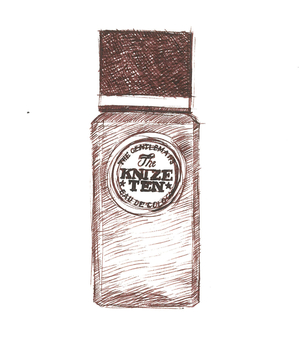
The year 1924 was a great one for perfume, if only because it saw the launch of both Chanel’s sumptuous Cuir de Russie and this, the wonderful Knize Ten. That both have survived into the present day is a bit of a miracle, but though they’re both usually placed in the ‘leather’ category of fragrances, they could hardly be less similar.
Cuir de Russie is a wonderfully rich and complex perfume, but its oddly androgynous combination of smoke and leather with a heavy floral note can make it rather difficult to wear. Knize Ten is a much more immediately appealing, fresher-smelling scent, and its leatheriness is tempered with the kind of zesty and herbal ingredients you’d expect to find in a classic eau-de-cologne – things like bergamot, lemon and geranium.
These gradually fade away on the skin, leaving a lovely, long-lasting but not overpowering leathery scent, less smoky than it is sweet. To me it also has a strong whiff of heliotrope – those electric-blue park bedding plants whose cherry-pie scent can be so intoxicating on a hot still high-summer’s day – but others may detect more than a hint (if I remember it right) of Plasticine; not unpleasant in itself, but enough to add a touch of childhood to the mix.
If Cuir de Russie is a testament to the genius of Ernest Beaux (whose greatest triumph was Chanel No 5), then Knize Ten is a fitting monument to François Coty (the mass-market perfume pioneer) and his brilliant technical director, Vincent Roubert (who had previously worked with Ernest Beaux in Grasse, then the perfume capital of France). It was commissioned, rather unusually, by a bespoke men’s tailoring company from Vienna, Knize, whose boutique is still going strong today. I’d wondered whether Knize Ten was the sole survivor of nine other fragrances, but it turns out that the name was dreamed up by their advertising director of the time, who beat Ralph Lauren by at least 50 years by seeking to associate the company with the aristocratic imagery of polo: the name ‘Ten’ was chosen to reflect the highest handicap in the game.
I love everything about Knize Ten: not just its instantly appealing smell but the smart glass bottle, with its crisply bevelled corners and chunky black cube of a cap. I’ve read somewhere that, like the company’s Viennese store, it was designed by the legendary Austrian architect Adolf Loos, and although that seems like wishful thinking it could be true; Loos designed further shops for Knize in Paris and Berlin, so their association was obviously close, and the dates look perfectly plausible too.
Even the typography of the label – a bold slab serif in a Victorian playbill style – is punchy and confident, just like the perfume inside. And while it’s far less widely available than it deserves to be, it’s not even that expensive by contemporary standards: what’s not to like?
Annick Goutal
Sables
5 February, 2015
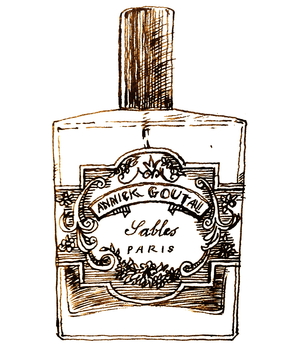 Once you’ve smelled a lot of perfumes you start to realise when a scent is cheap and nasty – even on the occasions when it’s got a huge advertising budget and everyone seems to be buying it. (Why? Well, a lot of people still get swept up by advertising, but you can be fairly sure they’ll only buy it once.)
Once you’ve smelled a lot of perfumes you start to realise when a scent is cheap and nasty – even on the occasions when it’s got a huge advertising budget and everyone seems to be buying it. (Why? Well, a lot of people still get swept up by advertising, but you can be fairly sure they’ll only buy it once.)
But even among the most brilliantly put-together perfumes each person’s individual reaction counts for a lot. Smell taps in to such deeply rooted – and often subconscious – memories and associations for each of us that two people can have completely different gut-reactions to the same scent.
And not only that: it actually smells completely different to each of them, even though their brain is presumably processing the same elements in a fairly similar way. Most scientists seem to agree that, unless we suffer from particularly severe sight problems, the way I see Hèrmes orange is almost certainly the same as the way you see it.
Smell, though, appears to work in a rather different manner. We may well smell the same scents in the same objective way, but the personal associations that specific scents have for us seem to be more powerful than what we actually smell – conceivably for the simple reason that we have such trouble describing them in words.
Here’s a perfect example. Sables was first launched by the late, great French perfumer Annick Goutal in 1985, and though it was withdrawn from the UK market some time ago in one of those mysterious overnight disappearances that give the perfume industry its faint whiff of Stalinism, it can still be bought online and abroad.
Sables is one of my all-time favourite fragrances. Though its name is meant to evoke the high-summer sexiness of sun-baked sand, this fantastically rich, sweetly luxurious scent smells, to me, of all the best things about Christmas – vintage oloroso sherry, mince pies, the delicious heat of an applewood log fire, flaming brandy, Christmas pudding… All very positive associations, as far as I’m concerned.
I’d be the first to admit that Sables is strong stuff, best suited to opulent winter evenings; apply it too liberally and, like Guerlain’s L’heure bleue or Chanel’s No22, it can easily become overpowering. But while I can imagine choking on No22 in too high a concentration, to be overcome by Sables would, for me at least, be like drowning in a butt of Malmsey – frankly not a bad way to go.
To a friend who knows at least as much about perfume as I do, though, Sables has an unattractively medicinal smell with none of the enchanting connotations that give it such a deep and lasting appeal for me. I can (kind of) see what he’s getting at, and if I try hard I can just about identify a hint of cough-mixture about it, but for some reason that association, in my mind, is completely drowned out by all the good stuff I’ve already mentioned.
The moral? I’m not sure there is one, but I guess it’s always good to remember there’s no guarantee that everyone is going to share your passion for a particular perfume, no matter how wonderful it smells to you.
Heeley
L’Amandière
19 November, 2014
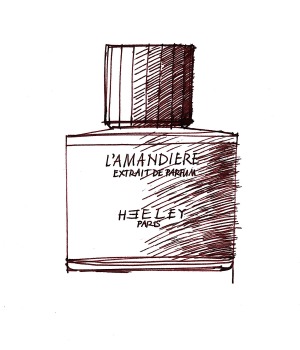
Well-heeled and well-spoken, with a passing resemblance to the young Bruce Chatwin, James Heeley is a Paris-based product designer and perfumer. We’re told that he was born in Yorkshire, studied philosophy in London and then worked as a lawyer, before moving to Paris in the late 1990s, where he changed tack again and began designing vases for star French florist Christian Tortu.
Through Tortu he met Annick Goutal, the legendary pianist turned model turned independent perfumer, which must have been an inspiring introduction to the world of perfume. Heeley describes himself as a self-taught perfumer, and though he commissioned his first few fragrances he now creates the initial olfactory compositions himself.
At £170 for a 50ml bottle of ‘Extrait de parfum’ (which you can buy online from Les Senteurs), L’Amandière is breathtakingly expensive, but at least it has the grace to look like it, coming in a bottle whose surprisingly hefty weight belies its size. Its design is crisp and simple, as you’d hope from a product designer, with a simple black label and a chunky black faceted cap.
Heeley calls his latest fragrance ‘a portrait of spring’, and adds ‘I tried to include many of the scents that my girlfriend loves (including almond) and assemble them to create an imaginary, spring orchard.’ He may have intended it as a woman’s perfume, but what you smell first is light and rather refreshing combination of almond oil and fresh-cut grass – both of which have hints of bitterness (in almond’s case) and sourness (in the case of green grass), which prevents L’Amandière coming across as too floral and girly.
It does have its floral side thanks to the pastel softness of mimosa, but because the almond scent predominates in the end its associations end up reminding one more of food than flowers – though without the cloying sweetness of other food-related fragrances like vanilla or chocolate.
On a woman I think it would smell perfectly pleasant, but on a man it’s much more interesting and unusual, which is why I’m recommending it here. It has surprisingly good staying-power too, which is a good thing given how much each spray has cost you. One for the connoisseur.
Hermès
Eau de Narcisse Bleu
10 October, 2014
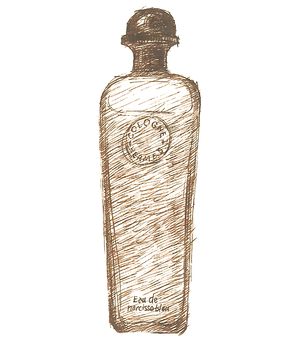 Pretty much everyone I know loves Hermès’ deliciously fresh and zingy Eau d’Orange Verte, so when Eau de Narcisse Bleu (literally ‘blue narcissus water’) was launched in 2013 it had a tough act to follow. As I’ve never seen a blue narcissus / daffodil, I think it’s safe to say that this perfume has an element of fantasy about it, and as a smell, too, it’s perhaps rather more complex and a little less instantly accessible than its predecessor. But give it a little time and I think it’ll grow on you.
Pretty much everyone I know loves Hermès’ deliciously fresh and zingy Eau d’Orange Verte, so when Eau de Narcisse Bleu (literally ‘blue narcissus water’) was launched in 2013 it had a tough act to follow. As I’ve never seen a blue narcissus / daffodil, I think it’s safe to say that this perfume has an element of fantasy about it, and as a smell, too, it’s perhaps rather more complex and a little less instantly accessible than its predecessor. But give it a little time and I think it’ll grow on you.
Eau de Narcisse Bleu may not have the euphoric mood-lifting freshness of Eau d’Orange Verte, but it has a gentle softness that, once you’ve smelled it for a while, is extremely appealing in its own right. It does have the faint sweetness of real daffodil flowers (try sticking your nose in one on a sunny day next March and you’ll see what I mean), but what narcissus extract smells of most, rather unexpectedly, is fresh hay. *
Now, I have nothing against smelling of hay, which is a lovely scent in its own right, but what Hermès’ much-mythologised perfumer, Jean-Claude Ellena, has done is blended the smell of hay with a whole raft of subtly complementary fragrances. Most of them are quite ‘green’ – that is, they smell fresh and natural, like grass and leaves, but not especially sweet or flower-like.
To me it has a slight but definite scent of fig-leaves, which for anyone who loves L’Artisan Parfumeur’s wonderful Premier Figuier as much as I do can only be a good thing. Whether this figginess is (excuse the pun) a figment of my imagination I’m not sure, but among the other ingredients that Ellena lists is galbanum, which is extracted from the root of a wild Iranian plant that looks a bit like fennel or cow-parsley, and indeed is distantly related to them.
Galbanum has a marvellously fresh sappy smell like newly-snapped pea-pods, and is one of the most important components of ‘green’ perfumes, but its greenness, here, is tempered by the hay-like sweetness of narcissus, with a hint of earthy bitterness underneath which manages to stop it from smelling at all girly.
If my description makes it sound a bit complicated, don’t be put off, for it’s such a well-blended perfume that there’s nothing discordant about it. In fact if anything it is, perhaps, a little too gentle for its own good, as it’s a ‘quiet’, thoughtful scent that stays close to your skin and doesn’t, on the whole, grab other people’s attention. It’s discreet and refined, in other words, rather than a ‘look-at-me’ perfume, which is perfect if you want to smell good without drawing attention to yourself. Go try it.
* I say ‘narcissus extract’, but one of the irritating things about perfume marketing is how vague – and frankly clueless – most descriptions of perfume ingredients actually are. For as anyone who actually grows the things themselves knows full well, a bright-yellow daffodil like Narcissus ‘February Gold’ smells very different to Narcissus papyraceus, the so-called paperwhite narcissus; the former has a gentle, hay-like scent, while one of the big selling-points of paperwhites is their powerful, almost jasmine-like perfume, the sweetness of which, en masse, can have a touch of the slightly repellent stagnant-water smell that perfumers refer to as ‘indolic’. If only perfume PRs were taught some basic botany.
Postscript – mystery solved, but only by going to the source: in France last week I visited IFF-LMR, the legendary natural raw perfume materials company near Grasse, and what should we get talking about but their narcissus extract, which is derived from the beautiful Narcissus poeticus, fields of which grow wild in the uplands of the Lozère. Did they use other species of daffodil as well? No, came the answer, and it’s their extract that you’re smelling (among many other things) in Eau de Narcisse Bleu.
Aramis
Aramis
13 September, 2014
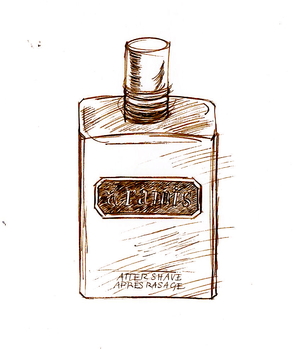 Snobbery seeps into most areas of life, including perfume, and it’s never a very attractive trait, though it’s something that most of us have been afflicted by at one time or another – at least until we learn better.
Snobbery seeps into most areas of life, including perfume, and it’s never a very attractive trait, though it’s something that most of us have been afflicted by at one time or another – at least until we learn better.
As our knowledge of perfume grows, a lot of us get a bit embarrassed about the mass-market fragrances we might once have liked. In some cases that’s fair enough: I don’t imagine that, if I went back and smelled the M&S aftershave I was given for a teenage birthday, I would think ‘wow, what a fantastic example of the perfumer’s art’. On the other hand, by turning our backs on popular perfumes we risk throwing out the Brut with the bathwater.
Aramis illustrates this danger very well. It might have been around as long as anyone can remember. It might (at least until fairly recently) have been as cheap as chips. It might not have come in the most stylish bottle, or the most alluring packaging. Yet it’s actually a wonderful, sexy, high-quality fragrance, which deserves its place on any perfume-lover’s (cool, dark) shelf.
Aramis was launched in 1964, the same year as the original Brut for Men. The first perfume in Estée Lauder’s all-male range of fragrances and skincare, it came to Britain in 1965, and at first was sold exclusively in Harrods – which just shows you images can change.
It was created by one of the finest perfumers of the time, Bernard Chant, who worked for the perfume multinational, International Flavors and Fragrances (IFF), and died in 1987. Chant made his name with the women’s perfume, Cabochard, which was launched in 1959. Combining the dry, leathery smell of isobutyl quinolene with bitter orange, jasmine, ylang-ylang, and various kinds of spice, it was a powerful, confident scent, and quickly became a best-seller – though it has been repeatedly reformulated since, so today’s Cabochard bears little or no resemblance to the original.
I mention Cabochard at some length because, when Chant came to create Aramis for Men, it seems he simply (as far as anything is simple in perfumery) adapted the formula for Cabochard, taking some of the floweriness out and emphasising its leathery-woodiness. The result is an equally punchy fragrance with lots of depth, but just enough rough-edged masculinity (including the sharp spicy-sweaty smell of cumin) to make it appealing to the stubbliest of men.
Aramis is spicy, sweet and long-lasting, and though its spiciness initially made me think of Chanel’s Egoïste, a quick comparison reveals that the latter is much more floral, with a strong dose of vanilla that Aramis lacks. If it doesn’t smell as unusual as some of the men’s perfumes I love, that’s as much as anything to do that it has been around for so long that we’ve since smelled lots of cheap copies, making it seem less original than it actually was in its time.
Bernard Chant went on to create a number of other fine perfumes for Estée Lauder’s various brands, including Azurée (1969) and the well-known Aromatics Elixir (1971), as well as the men’s fragrances Aramis 900 (1973, reviewed here), Devin (1978) and JHL (1981), which were repackaged and relaunched in 2009. They’re all worth exploring, and there’s nothing about them to be snobbish about.
Hermès
Equipage
14 July, 2014
 Equipage is a perfume I hadn’t smelled for years. I had a bottle long ago, but when it ran out I never got round to replacing it. Actually I’d forgotten how good it smells, so I’m delighted to have it back. It’s as timeless and well made as a piece of Hermès saddlery, and it even has something of the same comforting, leathery smell.
Equipage is a perfume I hadn’t smelled for years. I had a bottle long ago, but when it ran out I never got round to replacing it. Actually I’d forgotten how good it smells, so I’m delighted to have it back. It’s as timeless and well made as a piece of Hermès saddlery, and it even has something of the same comforting, leathery smell.
The first Hermès perfume to be aimed at men, Equipage was created by Guy Robert, one of the leading perfumers of his generation. You could say that Robert had perfume in his blood. He learned his trade in Grasse, once the world capital of perfumery and still an important production centre today. His uncle, Henri Robert, succeeded Ernest Beaux as perfumer-in-chief at Chanel, where he created No.19 and Pour Monsieur.
Equipage shares much of its character with Pour Monsieur, smelling effortlessly grown-up, discreet and rather conservative. The funniest comment I’ve seen online is that it ‘makes you smell ten years older. Richer, maybe; but older’, and I think that’s right, but now I’m older myself it’s nice to at least smell rich.
For a men’s perfume it has rather more floral ingredients than one might expect, including lily of the valley, jasmine and carnation, but they’re so subtly blended together that you’d never know. The flowers give it a little sweetness, but that’s balanced by the spicy, clove-scented edge of carnation. Equipage also contains a lot of orange, in the form of bergamot, squeezed from the peel of the Sicilian bergamot orange, Citrus bergamia, which is also used to flavour Earl Grey tea.
But that’s not all. This rich and complex fragrance also includes oakmoss (or a synthetic equivalent), which is actually a type of lichen that smells like a forest after rain; as it happens oakmoss also features in Pour Monsieur and Chanel No19. You might also be able to smell a touch of patchouli, that favourite 1970s fragrance, and perhaps a little Badedas-like pine – another forest touch.
There’s much, much more, which makes Equipage worth returning to again and again. It may not be the most avant-garde of fragrances, but if you want something reassuringly luxurious, it’s up there with the best.
Different Company
Osmanthus
8 July, 2014
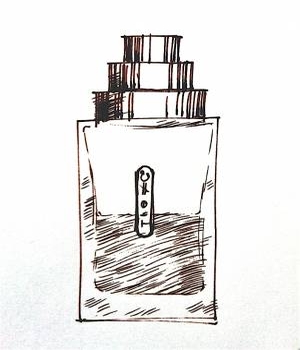 Much excitement in Weymouth, as the old Woolworth’s site has been transformed into a branch of T.K.Maxx. Even more excitement when, on our first visit, what should I pluck from the trashy mass-market scents you’d expect to find in a discount outlet but a brand-new bottle of Osmanthus by The Different Company.
Much excitement in Weymouth, as the old Woolworth’s site has been transformed into a branch of T.K.Maxx. Even more excitement when, on our first visit, what should I pluck from the trashy mass-market scents you’d expect to find in a discount outlet but a brand-new bottle of Osmanthus by The Different Company.
What a highly collectible perfume by a fairly obscure, high-end brand was doing in the Weymouth branch of T.K.Maxx I have no idea, but there it was, ours for the princely sum of £16.99 (recommended retail price €142).
Created by the much-admired perfumer Jean-Claude Ellena (now the in-house perfumer for Hermès) for the company he founded in 2000, Osmanthus gets an admiring review in the even more widely admired Perfumes: The Guide by Luca Turin and Tania Sanchez, and you can see why.
It’s a gentle, sweet but subtle scent, whose plush peachy centre is reminiscent of Guerlain’s timeless Mitsouko, though it seems to lack either Mitsouko’s strength of character or its mysterious staying-power. Yet Osmanthus has magic of its own, and its apparent evanescence on the skin proves something of a disappearing trick – for after putting a little on the back of my hand and noting that it didn’t seem to last very long, what should happen but that an hour or two later, as if from nowhere, its fresh, fruity scent would suddenly snap into focus again, almost as strong as when I first sprayed it on.
I’ve no idea how it’s done, or even whether the effect was intentional, but my guess is that it’s got something to do with the way Osmanthus’ peachiness bonds with the perfume’s other elements, some of which are a little surprising, like castoreum, a resinous compound extracted from beavers that has a leathery, animalic smell and is also found in Chanel’s wonderful Cuir de Russie.
Natural osmanthus, incidentally, is an attractive evergreen shrub which, in sheltered conditions, will grow to the size of a small tree. It grows wild in the Himalayas, China and Japan and was first introduced to European gardens in 1771, where it became known as Sweet Tea or Fragrant Olive. In the autumn it bears thousands of small but intensely fragrant white flowers, whose intoxicatingly sweet scent gives the plant its botanical name, Osmanthus fragrans.
Its fragrance, indeed, is remarkably powerful, as we discovered on an autumn visit to the enchanted garden of Brécy, near Bayeux. From the massively stepped levels of the formal gardens, which form a kind of vast single staircase up towards the Normandy sky, we recognised osmanthus’ heady scent a long time before we finally located its source, from a couple of dark columnar trees planted close against the south wall of the church, outside the gardens themselves.
Despite the sheer intensity of its fragrance, this is one of the only powerfully sweet scents I know that one can never smell enough (unlike, say, Madonna lilies, whose scent becomes overwhelming after a while): there’s a fresh lemony edge to osmanthus that makes it refreshing and intoxicating all at once. Enjoy Jean-Claude Ellena’s perfume by all means, but plant the tree wherever you can.